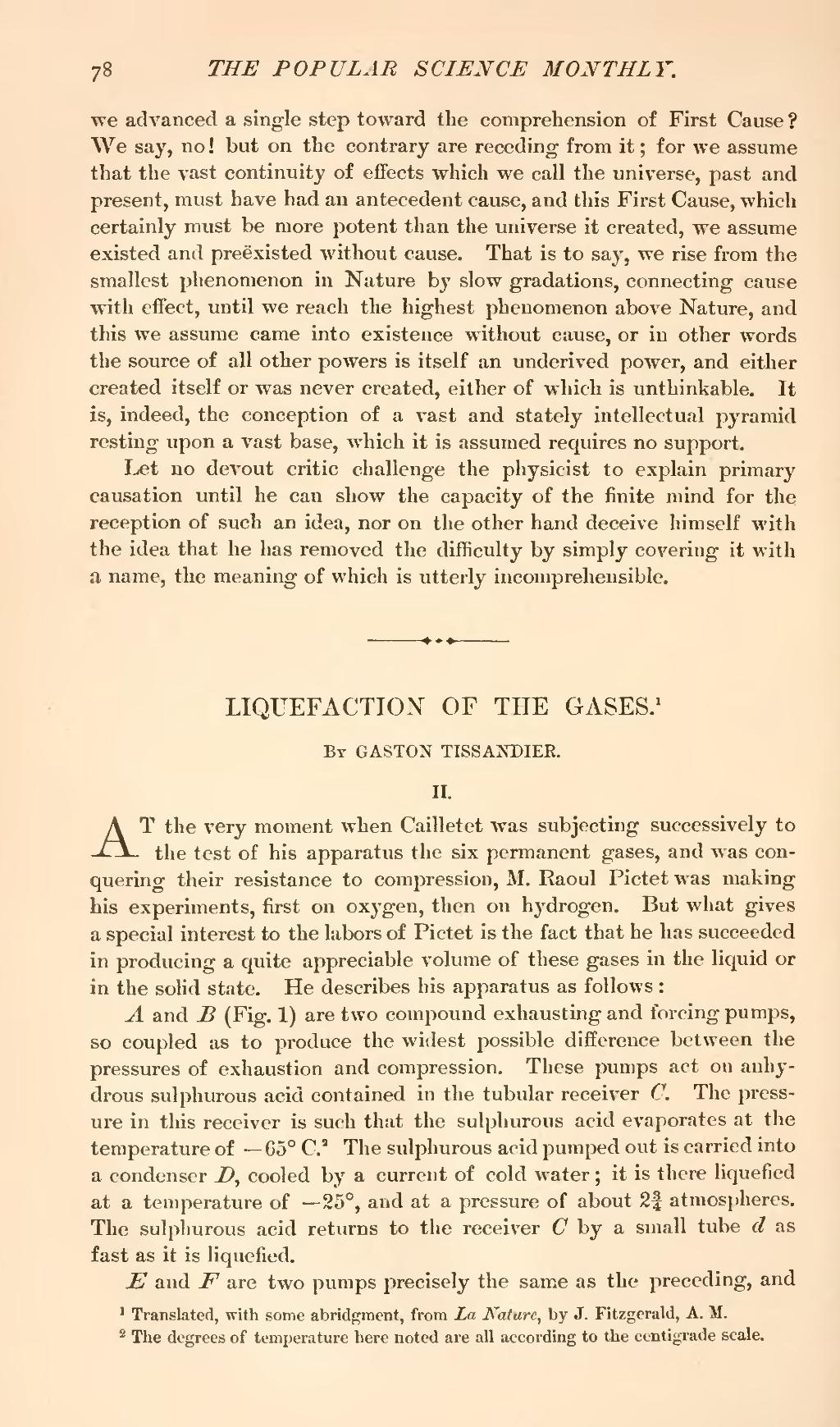we advanced a single step toward the comprehension of First Cause? We say, no! but on the contrary are receding from it; for we assume that the vast continuity of effects which we call the universe, past and present, must have had an antecedent cause, and this First Cause, which certainly must be more potent than the universe it created, we assume existed and preëxisted without cause. That is to say, we rise from the smallest phenomenon in Nature by slow gradations, connecting cause with effect, until we reach the highest phenomenon above Nature, and this we assume came into existence without cause, or in other words the source of all other powers is itself an underived power, and either created itself or was never created, either of which is unthinkable. It is, indeed, the conception of a vast and stately intellectual pyramid resting upon a vast base, which it is assumed requires no support.
Let no devout critic challenge the physicist to explain primary causation until he can show the capacity of the finite mind for the reception of such an idea, nor on the other hand deceive himself with the idea that he has removed the difficulty by simply covering it with a name, the meaning of which is utterly incomprehensible.
| LIQUEFACTION OF THE GASES.[1] |
By GASTON TISSANDIER.
II.
AT the very moment when Cailletet was subjecting successively to the test of his apparatus the six permanent gases, and was conquering their resistance to compression, M. Raoul Pictet was making his experiments, first on oxygen, then on hydrogen. But what gives a special interest to the labors of Pictet is the fact that he has succeeded in producing a quite appreciable volume of these gases in the liquid or in the solid state. He describes his apparatus as follows:
A and B (Fig. 1) are two compound exhausting and forcing pumps, so coupled as to produce the widest possible difference between the pressures of exhaustion and compression. These pumps act on anhydrous sulphurous acid contained in the tubular receiver C. The pressure in this receiver is such that the sulphurous acid evaporates at the temperature of -65° C[2]. The sulphurous acid pumped out is carried into a condenser D, cooled by a current of cold water; it is there liquefied at a temperature of -25°, and at a pressure of about 234 atmospheres. The sulphurous acid returns to the receiver C by a small tube d as fast as it is liquefied.
E and F are two pumps precisely the same as the preceding, and

